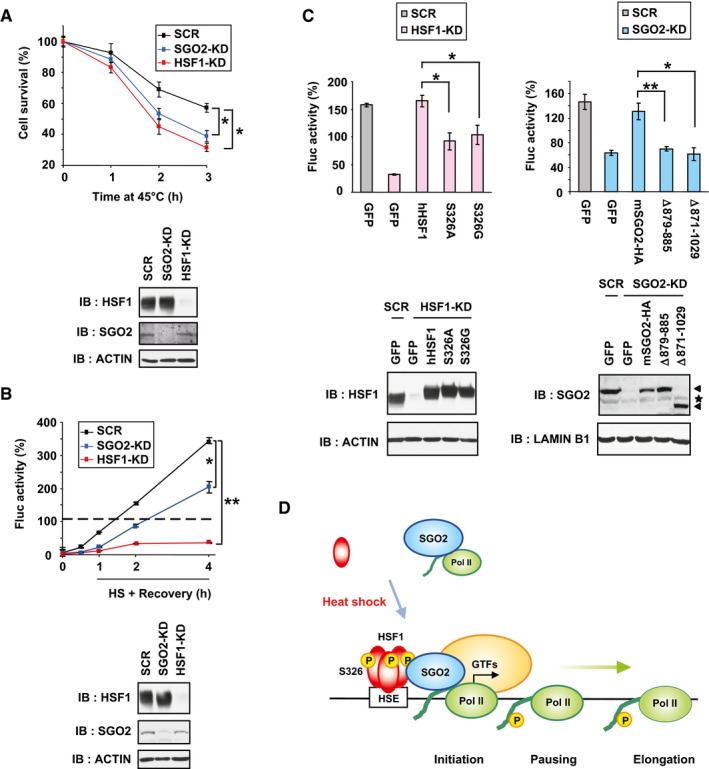SGO2‐knockdown cells were sensitive to heat shock. MEF cells were infected for 72 h with Ad‐sh‐mSGO2‐KD1, Ad‐sh‐mHSF1‐KD, or Ad‐sh‐SCR. After incubating these cells at 45°C for 1, 2, or 3 h, number of viable cells excluding trypan blue was counted (upper). Extracts of cells were subjected to immunoblotting (lower).
SGO2 promotes refolding of the luciferase sensor protein during recovery from heat shock. MEF‐Fluc cells were infected with Ad‐sh‐mSGO2‐KD1, Ad‐sh‐mHSF1‐KD or Ad‐sh‐SCR, and treated with heat shock at 42°C for 2 h (HS). These cells were then recovered at 37°C (Recovery) for the indicated periods, and luciferase activity values were calculated. The value of control cells maintained at 37°C was set to 100% (dotted line; upper). Extracts of cells were subjected to immunoblotting (lower).
HSF1‐SGO2 complex promotes refolding of the luciferase sensor protein. MEF‐Fluc cells were infected with Ad‐sh‐mSGO2‐KD1, Ad‐sh‐mHSF1‐KD, or Ad‐sh‐SCR for 24 h and then infected with each adenoviral expression vector for 48 h. These cells were treated with heat shock at 42°C for 2 h and then recovered at 37°C for 2 h. Luciferase activity values were calculated, and relative activities are shown (upper). Extracts of cells were subjected to immunoblotting (lower). Arrowheads indicate SGO2 bands, and a position of non‐specific bands is indicated by an asterisk.
Schematic model of Pol II recruitment by HSF1‐SGO2 complex during heat shock. In response to heat shock, S326‐phosphorylated trimeric HSF1 heavily occupies the HSEs in the HSP70 promoter and recruits SGO2. HSF1‐SGO2 complex facilitates recruitment of unphosphorylated (or hypophosphorylated) Pol II. The Pol II CTD is phosphorylated during initiation and elongation, and hyperphosphorylated Pol II dissociates from HSF1‐SGO2.
= 3). Asterisks indicate *
‐test in (C).

